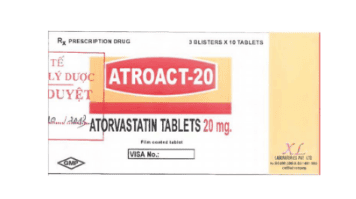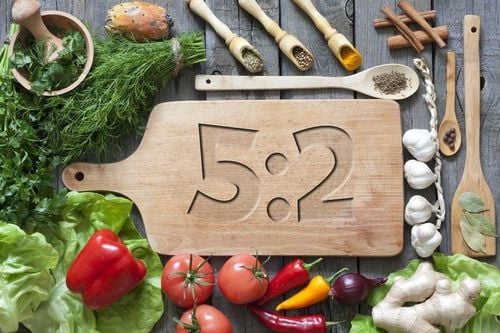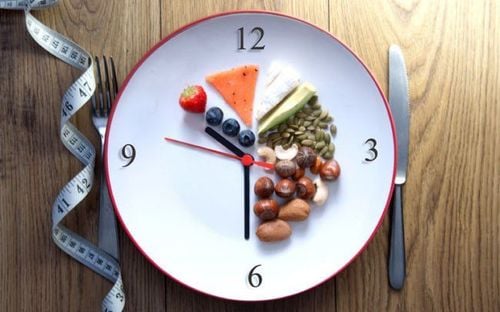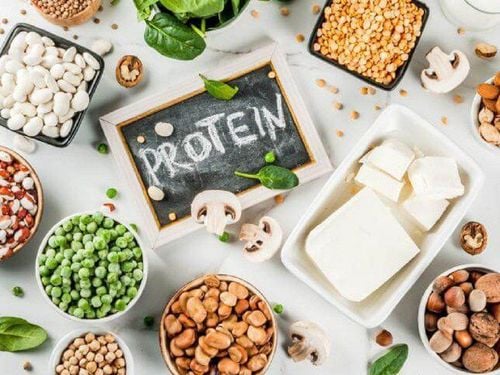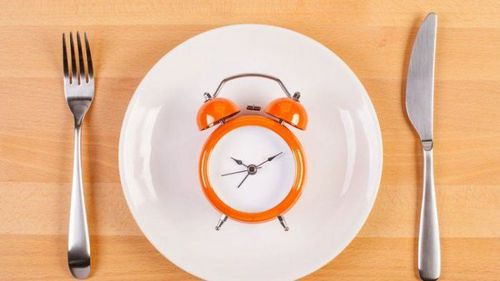This is an automatically translated article.
In nutrition, a diet is a combination of foods consumed by a person. The word diet often implies the use of a specific nutrient intake for health or weight management reasons. Habits and dietary choices play an important role in quality of life, health and longevity. So what diets are popular? In this article, we will provide useful information for you to better understand the popular diets today.
1. Overview
Today, the phenomenon of overweight and obesity is increasing because people are becoming more and more inactive, preferring to eat fast foods and unhealthy foods. Because of that situation, from bookstores to social networking sites, personal blogs are full of dietary information. But to be alert enough to distinguish which form of diet really works for you is quite a challenge.
It is important to remember that even if a particular diet may be successful for one person, it may not work for another due to individual differences in genes and lifestyle. And while research shows that not only focusing on getting enough calories but forgetting about food quality is equally important in preventing weight gain and promoting weight loss.
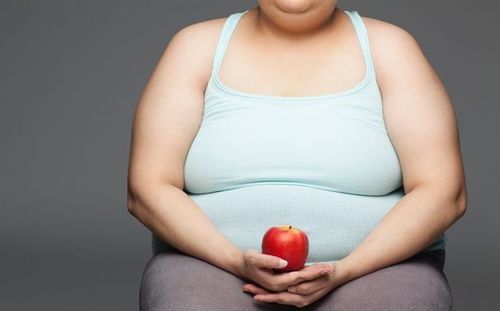
Ăn kiêng giúp kiểm soát cân nặng
2. Popular diets
Here are some forms of weight loss that are popular today and have somewhat worked for some groups of people
2.1. The DASH diet
DASH is a blood pressure-stopping dietary approach that is sometimes prescribed by doctors for patients with high blood pressure. Blood pressure is the pressure the blood exerts on the walls of the arteries. Usually it will change during the day but if it stays too high this is called high blood pressure or hypertension. Untreated high blood pressure can lead to heart disease, stroke, congestive heart failure, kidney disease, and blindness.
DASH mainly focuses on the following foods: fruits, vegetables, low-fat dairy, whole grains, fish, poultry, beans and nuts. It recommends reducing sodium, foods and beverages. added sugar and red meat. This diet is heart-friendly because it limits saturated and trans fats, and increases your intake of potassium, magnesium, calcium, protein and fiber, nutrients thought to help control blood pressure
This diet recommends specific servings of the foods listed above. Sample eating plans provided by the National Heart, Lung and Blood Institute (NHLBI) are based on 1600, 2000 or 2600 calories per day.
For example: - For a serving providing 2000 calories a day, the ingredients include: about 6-8 servings of cereals or grain products (whole grains are recommended), 4-5 servings of vegetables , 4-5 fruits, 2-3 low-fat dairy foods, 57 - < 85g servings of meat, poultry or fish, 2-3 servings of fat, and 4-5 servings of nuts or dried beans per the week. It recommends limiting sweets and added sugars to about 5 servings or less per week.
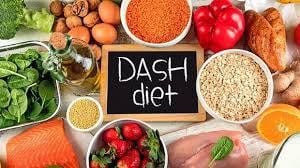
Chế độ ăn kiêng DASH giúp ngăn ngừa nhiều loại bệnh tật
2.2. Gluten-free diet
This is the only treatment for people with Celiac disease - an autoimmune disease in which the body mistakes gluten for an external threat. To eliminate this “threat”, the body overreacts and attacks the gluten proteins, causing a range of symptoms from bloating to intestinal damage
The gluten-free diet eliminates all foods that contain or are contaminated with gluten. Gluten is largely found in foods, found as a major ingredient (in wheat, rye, barley, triticale, cross-contaminated oats), in sauces (soy sauce, malt vinegar, flours) noodles), and as an additive or filler (maltodextrin, wheat starch)
Recommended foods in this diet include: All meats and fish; egg; dairy products; fruits and vegetables; nuts (quinoa, tapioca, sorghum, corn, millet, oats....); flours (corn flour, potato flour, chickpea flour, soybean meal...)
2.3. Intermittent fasting for weight loss (5:2 diet)
Intermittent fasting is a diet that alternates between short periods of fasting, no eating or significant calorie reduction, and periods of unrestricted eating. It is recommended to alter body composition through reductions in fat mass and weight, and to improve disease-related health markers such as blood pressure and cholesterol levels.
Intermittent fasting methods for weight loss include
Alternating day fasting—Changing between days of no food restriction with days of only one meal providing about 25% of daily calorie needs. For example: Monday-Wednesday-Friday fasting, while the rest of the days there is no food limit. Full-day fasting —1-2 days per week fasting completely or up to 25% of daily calorie needs, with no food restrictions on other days. For example, the 5:2 Diet Approach advocates no food restriction on five days of the week, cyclically with a 400-500 calorie diet on the other two days of the week. Time-limited feedings — Follow a meal plan each day with a designated fasting time frame. Example: Meals are taken from 8 am - 3 pm, fasting for the rest of the day.
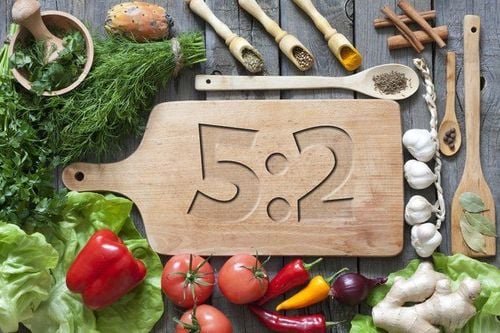
Chế độ nhịn ăn gián đoạn để giảm cân được áp dụng phổ biến ở nhiều đối tượng
2.4. Low Carb Diet
This is a diet that restricts carbohydrates, such as those found in sugary foods, pasta and bread. It's packed with protein, fat, and healthy veggies.
Foods that need to be supplemented include: All types of meat (beef, sheep, chicken, pig...); Fish (salmon, cod, wild-caught fish...); Egg; Vegetables (spinach, broccoli, carrots...); Fruits (peach, pear, orange, blueberry...); High-fat milk; Nuts (almonds, walnuts...)...
Foods to abstain: Sugar; Refined grains; Processed foods; Vegetables contain a lot of starch...
2.5. Ketogenic diet
The ketogenic or “keto” diet is a low-carbohydrate, high-fat eating plan that has been used for centuries to treat specific medical conditions. The diet has also been tested and used in closely monitored settings for cancer, diabetes, polycystic ovary syndrome, and Alzheimer's disease.
There is no one “standard” ketogenic diet with a specific ratio of macronutrients (carbohydrates, proteins, fats). Ketogenic diets typically reduce total carbohydrate intake to less than 50 grams per day and possibly down to 20 grams per day. For a 2000 calorie diet, that includes about 165 grams of fat, 40 grams of carbohydrates, and 75 grams of protein. Protein intake in the ketogenic diet is kept moderate compared to other low-carb diets, as eating too much protein can prevent ketosis. The amino acids in protein can be converted to glucose, so the ketogenic diet specifies enough protein to maintain lean body mass including muscle.
Many versions of the ketogenic diet exist, but all recommend avoiding high-carb foods. Some of these foods include: starches from both refined and whole grains such as breads, cereals, pasta, rice, and cookies; potatoes, corn and other starchy vegetables; and fruit juice. Some beans and most fruits. Most ketogenic plans allow foods high in saturated fat, such as low-fat cuts, processed meats, lard, and butter, as well as unsaturated fat sources, such as nuts, seeds, and seeds. , butter, vegetable oil and fish.
Each different keto plan offers a different food source. The Keto Diet recommends that you follow a specific ketogenic diet until you have lost the desired amount of weight. Once this is achieved, to prevent weight gain again, one can follow the diet several days a week or several weeks a month, alternating with other days that allow for higher carbohydrate intake.
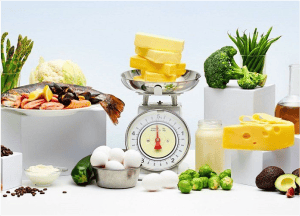
Chế độ ăn kiêng Ketogenic là chế độ ít carbohydrate, giàu chất béo
2.6. Mediterranean diet
This is a well-researched diet for people who want to prevent cardiovascular disease, with an emphasis on healthy fats for the body. The Mediterranean diet is a predominantly plant-based eating plan that includes amounts of whole grains, olive oil, fruits (avocados), vegetables, beans, nuts (walnuts), herbs, and legumes. daily carpentry and spices. Other foods such as animal protein are eaten in smaller amounts such as red meat in quantities a few times a month, poultry and eggs a few times a week, fish (sardines, fish) is preferred. anise) and seafood.
Choose water as your main daily drink, you can still drink alcohol but should drink in moderation with meals, about one to two drinks per day for men and one drink per day for women.
Deciding exactly how much food to eat at each meal is up to the individual, as this will vary with physical activity and body size.
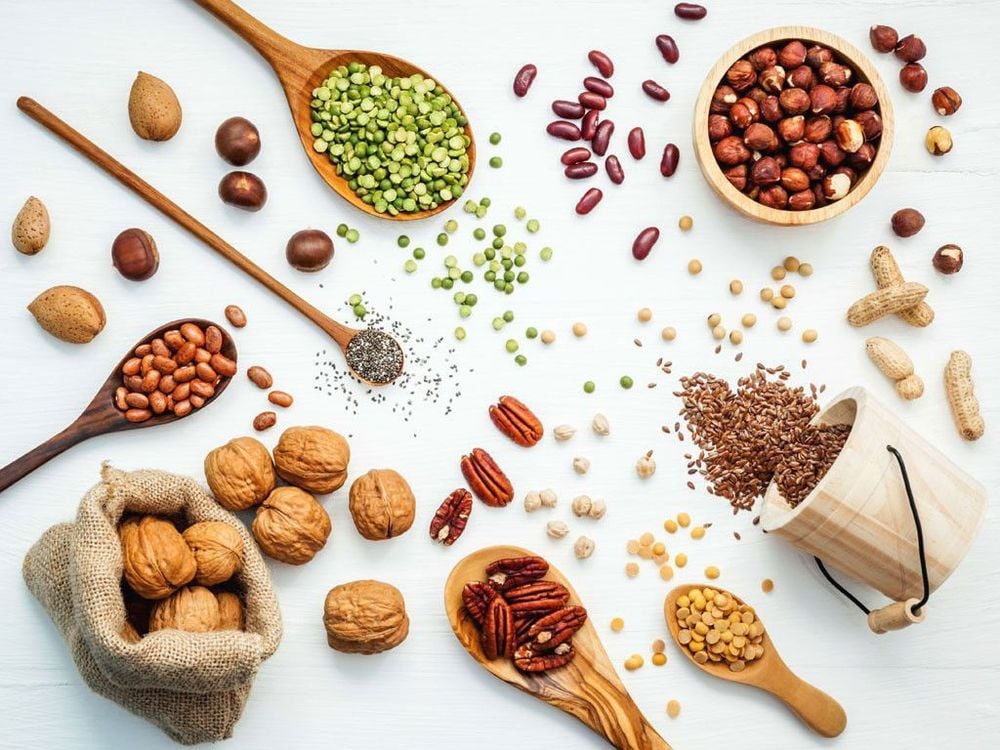
Chế độ ăn kiêng Địa Trung Hải chủ yếu sử dụng ngũ cốc nguyên hạt
2.7. The "mindful eating" diet
Mindfulness is the purposeful focus on one's thoughts, feelings, and physical sensations in the present moment. Mindful eating means that you are using all of your physical and emotional senses to experience and enjoy the foods you have chosen.
Mindful eating focuses on the experience of eating, how the body feels and the thoughts and feelings about food, with heightened awareness and non-judgment. This diet helps us
Respect food for what it looks like, how it tastes; Respect the person who cooks them; Acknowledge how your body feels after you finish eating; Use all your senses to perceive the taste of food; Enjoy small bites, chew slowly, eat slowly to avoid overeating Don't skip meals Eating a plant-based meal is key for your health and the planet Eating mindfully can Not effective on its own as a weight loss strategy, but as a supplement to a weight loss program. Mindful eating involves making food choices that promote health and enhance enjoyment of the dining experience. Traditional weight loss diets focus on following a structured meal plan that may not necessarily make you satisfied or enjoyable. Combining mindfulness with meal planning under the guidance of a dietitian can reduce the risk of overeating or binge eating.
2.8. Vegan Diet
Vegan diet specifically for vegetarians who do not eat meat, fish, eggs and dairy products. Instead they eat only fruits and vegetables, legumes, as well as plant-based milk.
Many people still condemn the vegan diet as being unbalanced or "abusive" because this diet does not use animal protein sources at all. But there is no denying the weight loss benefits as well as the health benefits that it brings. Not only does it help dieters get a slim waistline, but it also improves blood sugar levels as well as the risk of atherosclerosis, high blood pressure, and fatty blood in part due to an unhealthy diet. .
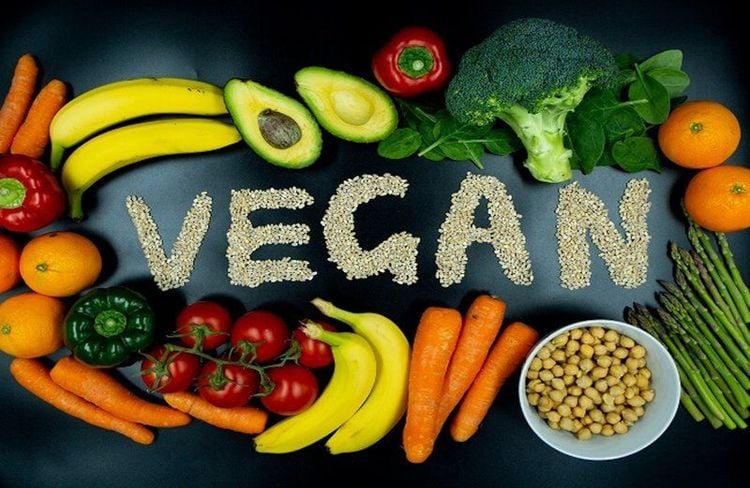
Chế độ ăn thuần chay là chế độ từ bỏ thịt, cá chỉ ăn rau củ
2.9. Paleo diet
The Paleo diet, also known as the caveman or stone age diet, consists of lean meat, fish, fruits, vegetables, nuts, and seeds. Proponents of this diet emphasize choosing low-glycemic fruits and vegetables. Processed foods are also limited and focus on fresh foods only, but some individual Paleo diets allow fruits and vegetables to be frozen because the freezing process preserves most of the nutrients. .
Overall, this is a diet that is high in protein, moderate in fat (mainly from unsaturated fats), moderately low in carbohydrates (especially limited in high glycemic index carbohydrates), high in fiber, and low in carbohydrates. sodium and refined sugar. Monounsaturated and polyunsaturated fats (including the omega-3 fats EPA and DHA) come from sea fish, avocados, olive oil, and nuts.
Foods used : Fresh lean meat, Shellfish, eggs, nuts, fruit, olive oil, coconut oil, a little honey. Some vegetables such as sweet potatoes and cassava are allowed in moderation.
Foods not allowed: Whole grains, crushed cereals, refined sugar, dairy products, white potatoes, legumes, alcohol, coffee, salt, vegetable oils.
A few short-term studies indicate that the Paleo diet can lead to more weight loss, lower waist circumference, lower blood pressure, increased insulin sensitivity, and improved cholesterol. But in the long term, it can increase the risk of calcium, vitamin D and vitamin B deficiencies from eating whole foods, and excluding whole grains can reduce consumption of these nutrients. beneficial as fiber and can therefore increase the risk of diabetes and heart disease.
Above are the diets that are quite popular and well known and applied by many people. Any diet has its advantages and disadvantages, if only a few introductions will not be able to describe each regimen in detail. So when you have a need to lose weight or want to change your eating habits, the first thing you should do is talk to a nutritionist for the most useful advice to help you choose a diet. Diet suitable for yourself. Never follow a trend that harms your health.
Please dial HOTLINE for more information or register for an appointment HERE. Download MyVinmec app to make appointments faster and to manage your bookings easily.
References: who.int, healthline.com





